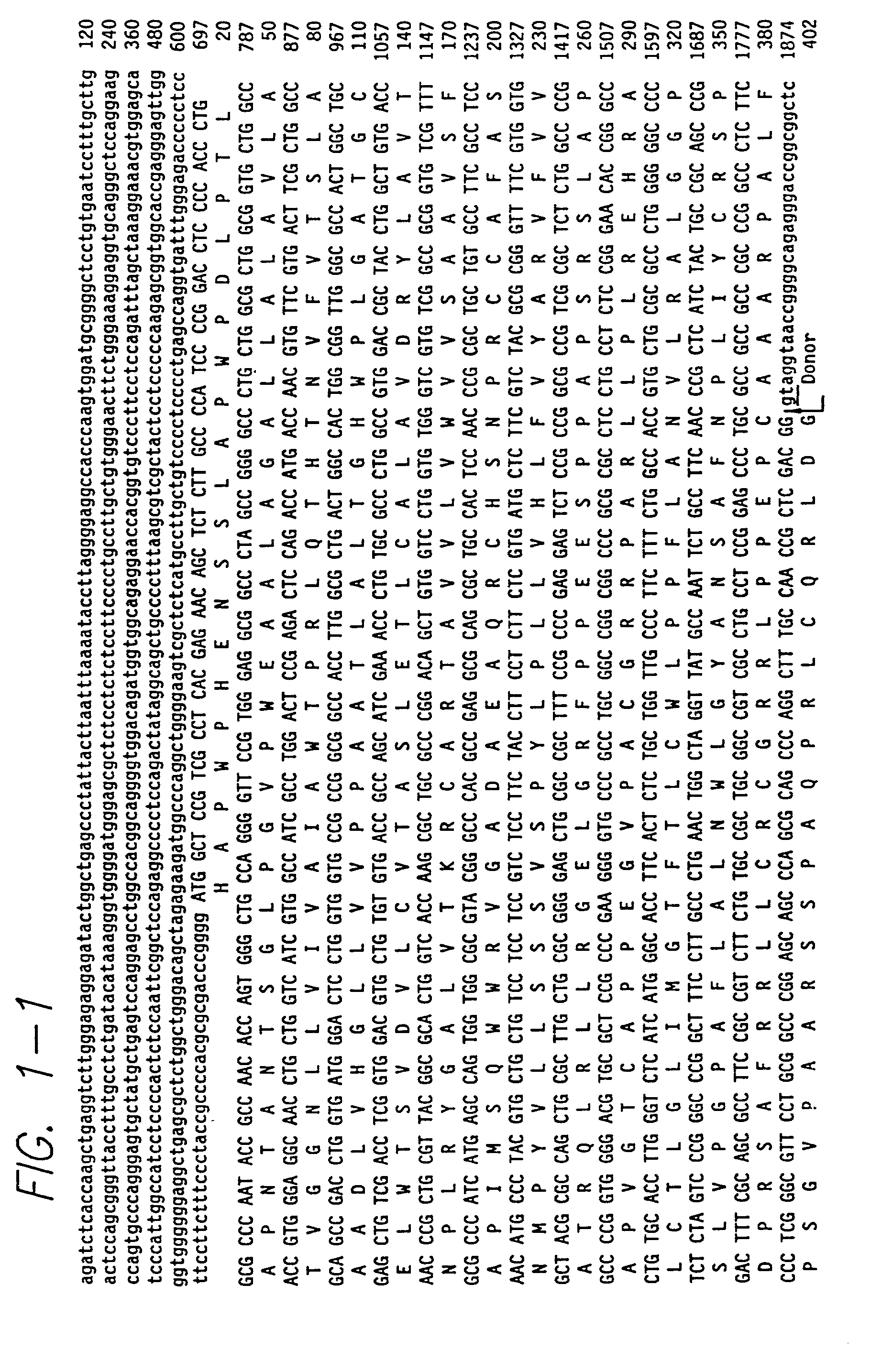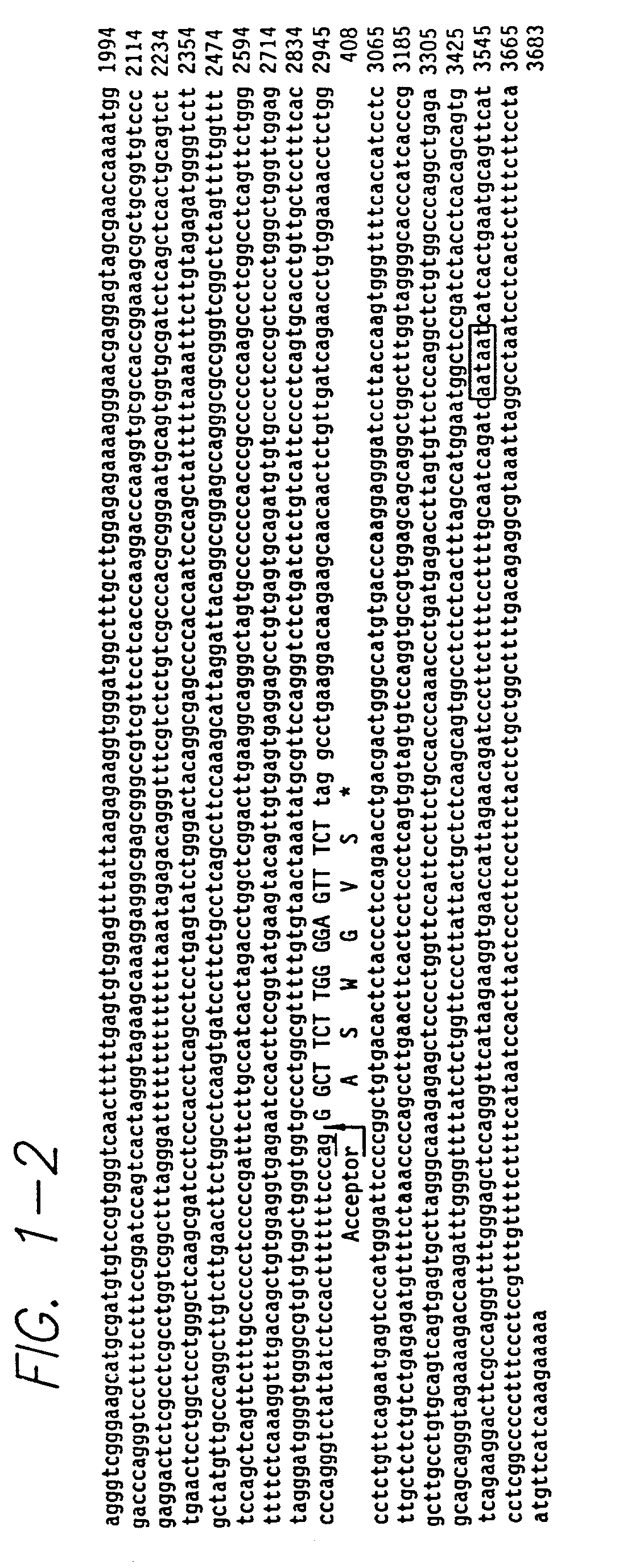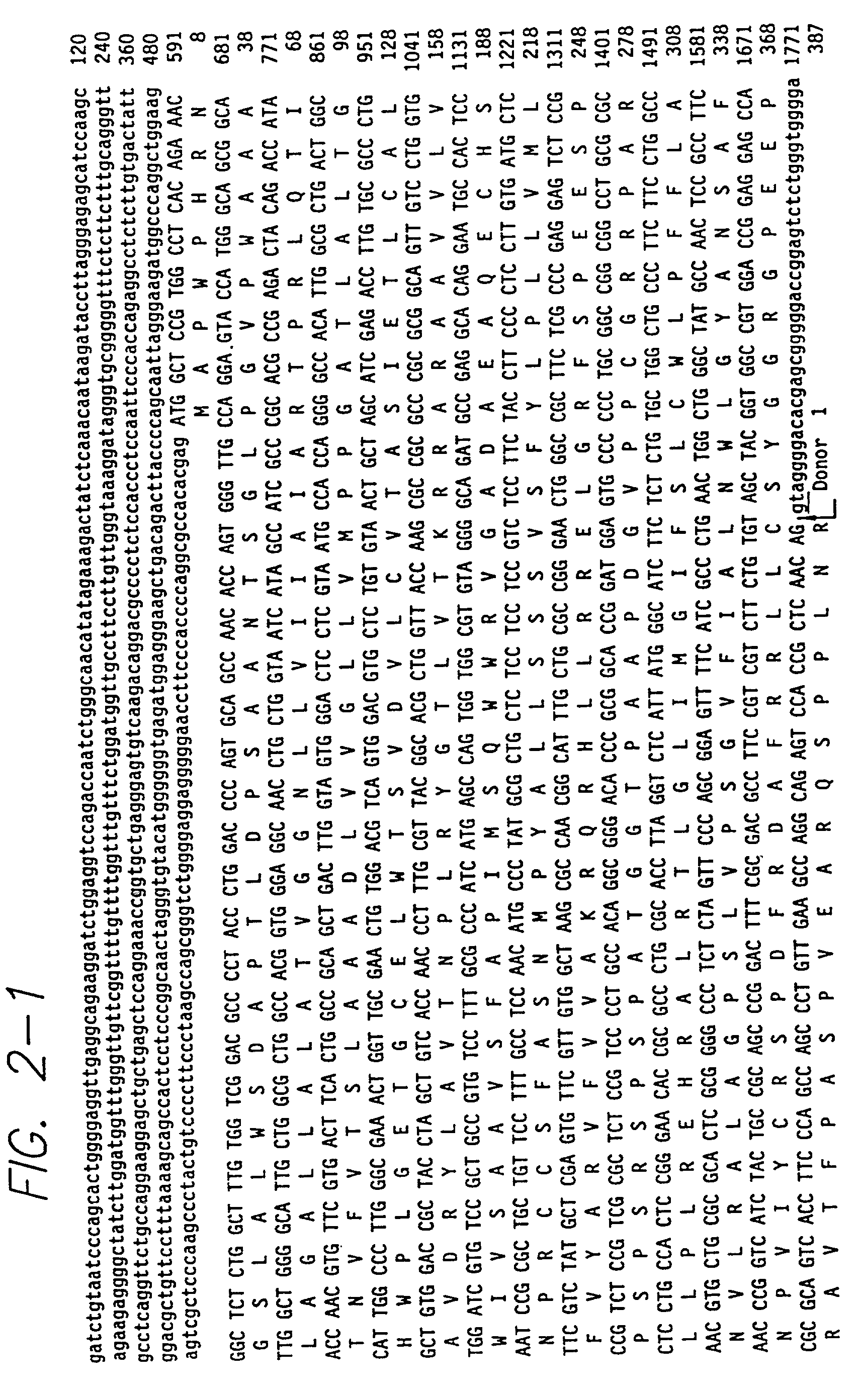Intron/exon structure of the human and mouse beta3-adrenergic receptor genes
a beta3adrenergic receptor, human and mouse technology, applied in the field of gene encoding beta, can solve the problems of many individuals producing side effects
- Summary
- Abstract
- Description
- Claims
- Application Information
AI Technical Summary
Problems solved by technology
Method used
Image
Examples
example 1
[0062] Isolation and sequencing of the murine .beta.3AR gene
[0063] All the methods used for recombinant DNA procedures are from Ausubel et al. Science 245, pgs 1118-1121 (1987). A 1.3 kb NcoI-BamHI DNA fragment encompassing the entire coding region of the human .beta.3AR gene (Emorine et al. Current Protocols in Molecular Biology, Greene publishing Associates and Wiley InterScience, New York (1989)) was used as a probe to screen a mouse NIH 3T3 genomic library in the lambda FIX.TM.II vector (Stratagene). The nitrocellulose replica filters of the library were prehybridized for 16 h at 42.degree. C. in a buffer containing 8 mM Tris-HCl (pH 7.5), 40% formamide, 4.times.SSC, 5.times.Denhardt's, 0.2% SDS, 50 mM sodium phosphate and 100 .mu.g / ml heat-denatured salmon sperm DNA. Hybridization was performed for 16 h at 42.degree. C. in the same buffer containing the probe (2.times.10.sup.6 c.p.M. / ml) .sup.32P-labelled by the random priming method to a specific activity of 10.sup.9 c.p.m. / .m...
example 2
[0065] DNA probe and Hybridization Analysis
[0066] A 310 bp DNA fragment ("A43") corresponding to the N-terminus of the mouse .beta.3-adrenergic receptor was produced by polymerase chain reaction using a template of 5 ng of the lambda clone containing the mouse .beta.3-adrenergic receptor gene. Thirty cycles of amplification at 93.degree. C. for 1.5 minute; 55.degree. C. for 2 minutes; and 72.degree. C. for 2 minutes were performed using 2.5 U Taq polymerase (Cetus) in 100 .mu.l of buffer containing 10 mM Tris-HCl (pH 8.4), 3 mM MgCl.sub.2, 0.05% TWEEN 20, 0.05% NP40, 10% dimethylsuplhoxide, 5% formamide, 125 .mu.M of each deoxynucleotide triphosphate and 125 pM of each primer. Sense (SEQ ID NO:7) (5'-GCTCCGTGGCCTCACGAGAA-3') and antisense (SEQ ID NO:8) (5'-CCCAACGGCCAGTGGCCAGTCAGCG-3') primers corresponding to amino acids 2-8 and 98-106, respectively of the human .beta.3-adrenergic receptor sequence. The amplified 310 bp DNA fragment was purified by electrophoresis through an acryla...
example 3
[0069] In situ hybridization
[0070] For chromosal localization of the .beta.3-adrenergic receptor gene in mouse, in situ hybridization was performed on metaphase spreads of concavalin A-stimulated lymphocytes from a WMP male mouse, in which all the autosomes except number 19 were in the form of metacentric Robertsonian translocations. For localization of the .beta.3-adrenergic receptor gene in man, metaphase spreads were from phytohaemagglutinin-sti- mulated human lymphocytes. In both cases the lymphocytes were cultured at 37.degree. C. for 72 hrs., with 5-bromodeoxyuridine (60 .mu. / ml) added for the final 7 hours of culture.
[0071] Specific probes were the 310 bp A43 fragment of the mouse .beta.3-adrenergic receptor gene and a 206 bp (AccI-ApaLl) DNA fragment encompassing the third intracytoplasmic loop of the human .beta.3-adrenergic receptor. These fragments were subcloned into the pUC19 plasmid vector, tritium labelled by nick translation to a specific activity of 108 d.p.m. / .mu.g...
PUM
| Property | Measurement | Unit |
|---|---|---|
| pH | aaaaa | aaaaa |
| pH | aaaaa | aaaaa |
| concentration | aaaaa | aaaaa |
Abstract
Description
Claims
Application Information
 Login to View More
Login to View More - R&D
- Intellectual Property
- Life Sciences
- Materials
- Tech Scout
- Unparalleled Data Quality
- Higher Quality Content
- 60% Fewer Hallucinations
Browse by: Latest US Patents, China's latest patents, Technical Efficacy Thesaurus, Application Domain, Technology Topic, Popular Technical Reports.
© 2025 PatSnap. All rights reserved.Legal|Privacy policy|Modern Slavery Act Transparency Statement|Sitemap|About US| Contact US: help@patsnap.com



